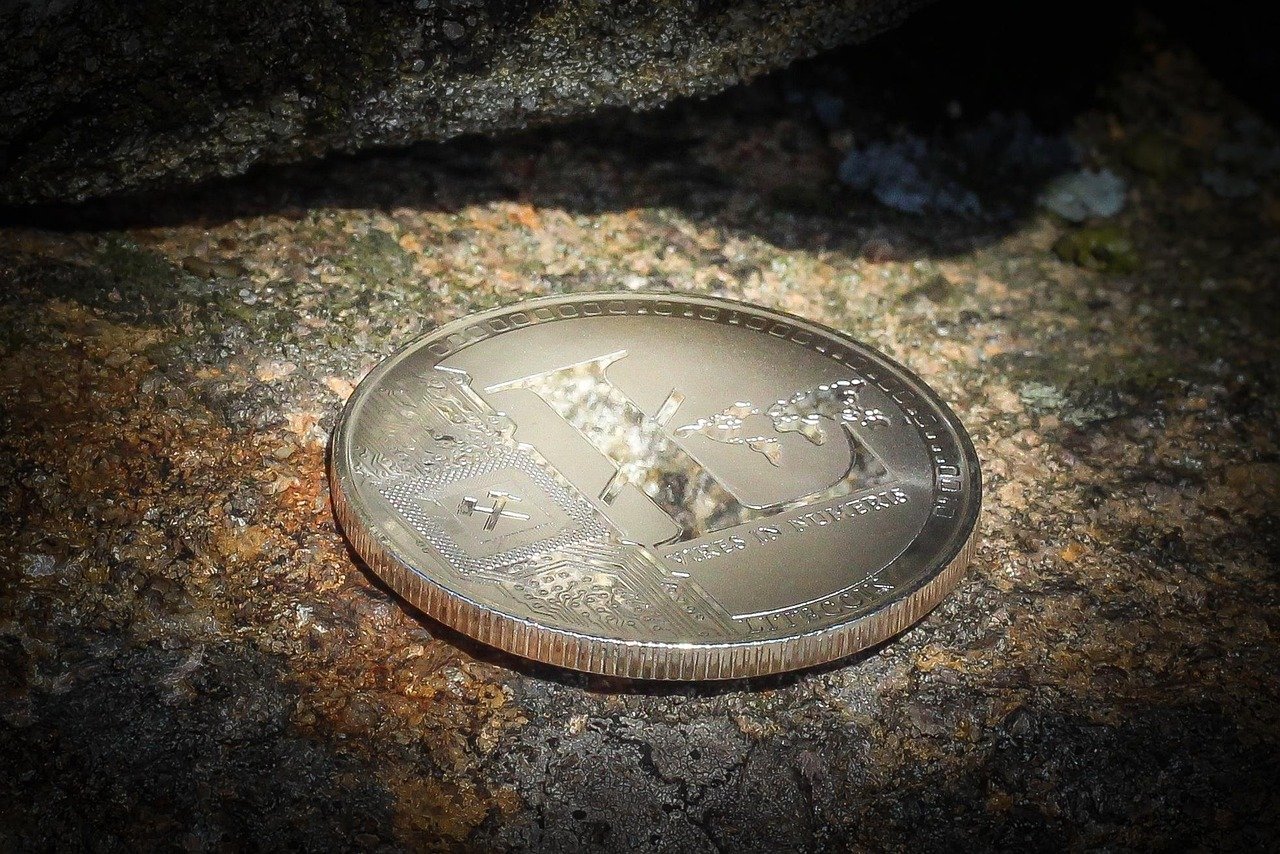Cryptocurrency. Just the word conjures images of overnight riches, groundbreaking technology, and…extreme price swings. This volatility, the rapid and sometimes unpredictable changes in value, is arguably the biggest hurdle for wider crypto adoption. Understanding the drivers and impacts of this volatility is crucial for anyone considering investing in digital assets. This article will delve into the causes, consequences, and coping mechanisms surrounding crypto volatility, equipping you with the knowledge needed to navigate this dynamic landscape.
Understanding Crypto Volatility
What Exactly is Crypto Volatility?
Crypto volatility refers to the degree of price fluctuation of a cryptocurrency over a specific period. High volatility means the price can change dramatically in a short time, while low volatility indicates a more stable price. It’s measured using metrics like standard deviation or average true range (ATR), which quantify the historical price movements of an asset. A higher ATR generally means higher volatility.
Why is Crypto So Volatile?
Several factors contribute to the inherent volatility of cryptocurrencies:
- Market Sentiment: Crypto markets are heavily influenced by news, social media trends, and overall investor confidence. A single tweet from a prominent figure can trigger massive buy or sell-offs.
- Regulatory Uncertainty: The lack of clear and consistent regulations surrounding cryptocurrencies in many jurisdictions creates uncertainty, impacting investor confidence and market stability.
- Market Maturity: Compared to traditional financial markets, the cryptocurrency market is still relatively young and immature. This means there are fewer institutional investors, lower liquidity, and greater susceptibility to price manipulation.
- Supply and Demand: The price of any asset is ultimately determined by supply and demand. Cryptocurrencies with limited supply and high demand can experience significant price surges. Conversely, negative news can rapidly decrease demand, leading to sharp price drops.
- Whale Activity: Large holders of cryptocurrency (“whales”) can significantly impact the market with their buy or sell orders, leading to sudden price movements.
- Technology and Security: Concerns about the security of crypto platforms, blockchain vulnerabilities, and potential hacks can also trigger volatility.
Examples of Significant Volatility Events
The history of cryptocurrency is filled with examples of extreme volatility:
- The 2017 Bitcoin Bull Run and Subsequent Crash: Bitcoin’s price soared from under $1,000 in January 2017 to nearly $20,000 in December 2017, only to plummet to around $3,000 in 2018.
- The May 2021 Crypto Crash: Triggered by a combination of factors, including Elon Musk’s tweets regarding Bitcoin’s energy consumption and regulatory concerns in China, the market experienced a massive sell-off, with many cryptocurrencies losing significant value.
- The FTX Collapse (2022): The sudden collapse of the cryptocurrency exchange FTX sent shockwaves through the market, leading to a dramatic decline in the prices of many cryptocurrencies, particularly those associated with the FTX ecosystem.
The Impact of Volatility on Investors
Risks of Investing in Volatile Assets
High volatility presents both opportunities and risks for investors:
- Potential for High Returns: Volatile assets can generate substantial profits in a short period if investments are timed correctly.
- Risk of Significant Losses: Conversely, the same volatility can lead to significant losses if the market moves against an investor’s position. It’s possible to lose a substantial portion, or even all, of your investment.
- Emotional Stress: Watching the value of your investments fluctuate wildly can be stressful and lead to impulsive decision-making.
- Liquidation Risks: In highly leveraged positions, sudden price drops can trigger margin calls, forcing investors to liquidate their holdings at a loss.
Benefits of Volatility (for Some)
While often viewed negatively, volatility can also be beneficial to certain investors and market participants:
- Trading Opportunities: Skilled traders can profit from short-term price fluctuations by buying low and selling high. This is particularly true for day traders and swing traders.
- Market Correction Opportunities: Dips in price caused by volatility can provide opportunities to buy assets at a discount, potentially leading to higher returns in the long run.
- Discovery of Underlying Value: Volatility can sometimes expose overvalued assets, leading to a more accurate price discovery process.
Who Benefits the Most from Crypto Volatility?
Those who typically benefit most from crypto volatility are:
- Experienced Traders: Those with a strong understanding of technical analysis and risk management strategies are better equipped to navigate volatile markets.
- High-Frequency Traders (HFTs): Sophisticated trading firms using algorithms and high-speed infrastructure can capitalize on small price discrepancies resulting from volatility.
- Market Makers: These entities provide liquidity to exchanges and profit from the bid-ask spread, which widens during periods of high volatility.
Strategies for Managing Crypto Volatility
Diversification
Diversifying your crypto portfolio can help mitigate risk. Instead of putting all your eggs in one basket, spread your investments across different cryptocurrencies with varying market capitalizations, use cases, and risk profiles. Consider allocating a portion of your portfolio to stablecoins or other less volatile assets. For example:
Instead of investing only in Bitcoin, consider adding Ethereum, Litecoin, and maybe a few smaller-cap altcoins with promising technology. Also, consider having some stablecoins to buy the dips.
Dollar-Cost Averaging (DCA)
Dollar-cost averaging involves investing a fixed amount of money at regular intervals, regardless of the asset’s price. This strategy helps to smooth out the impact of volatility by averaging your purchase price over time. For example:
Instead of investing $1,200 in Bitcoin at once, invest $100 each month for a year. This will allow you to buy more Bitcoin when the price is low and less when the price is high, potentially resulting in a lower average cost per Bitcoin.
Stop-Loss Orders
A stop-loss order is an instruction to sell an asset when it reaches a specific price. This helps to limit potential losses in a volatile market. Setting a stop-loss order can prevent you from losing more than you’re willing to risk on a particular trade. However, be aware of “stop-loss hunting,” where market manipulators attempt to trigger stop-loss orders to profit from the resulting price movement.
Risk Management Techniques
Employing proper risk management techniques is crucial for navigating crypto volatility:
- Determine your risk tolerance: Understand how much risk you are comfortable taking and adjust your investment strategy accordingly.
- Use leverage cautiously (or not at all): Leverage can amplify both gains and losses. Avoid using high leverage in volatile markets.
- Stay informed: Keep up-to-date with market news, regulatory developments, and technological advancements in the crypto space.
- Don’t invest more than you can afford to lose: This is a fundamental principle of investing, especially in high-risk assets like cryptocurrencies.
Use Stablecoins and Hedging Strategies
Stablecoins, cryptocurrencies pegged to a stable asset like the US dollar, can provide a safe haven during periods of market volatility. Hedging strategies, such as using futures contracts or options, can also be used to protect your portfolio from potential losses. However, these strategies require a good understanding of financial derivatives and can be complex.
The Future of Crypto Volatility
Will Crypto Volatility Decrease Over Time?
Whether crypto volatility will decrease over time is a subject of ongoing debate. As the market matures, more institutional investors enter the space, and regulations become clearer, volatility is expected to decrease somewhat. However, the innovative nature of cryptocurrencies and the inherent risks associated with emerging technologies suggest that volatility will likely remain a characteristic of the crypto market for the foreseeable future.
Factors That Could Increase or Decrease Volatility
Several factors could influence the future volatility of cryptocurrencies:
- Positive Factors (Potentially Decreasing Volatility):
- Increased institutional adoption
- Clearer regulatory frameworks
- Greater market liquidity
- Technological advancements that improve scalability and security
- Negative Factors (Potentially Increasing Volatility):
- Major security breaches or hacks
- Negative regulatory developments
- Economic downturns or global crises
- Emergence of new, competing technologies
Predictions and Expert Opinions
Experts hold varying opinions on the future of crypto volatility. Some believe that as the market matures, it will become more stable and predictable. Others argue that the inherent nature of cryptocurrencies as decentralized and unregulated assets will always make them susceptible to volatility. Ultimately, the future of crypto volatility will depend on a complex interplay of technological, economic, and regulatory factors.
Conclusion
Crypto volatility is an inherent characteristic of the digital asset market, presenting both opportunities and risks. Understanding the causes of volatility, its impact on investors, and strategies for managing it is crucial for navigating this dynamic landscape successfully. While the future of crypto volatility remains uncertain, employing prudent risk management techniques, diversifying your portfolio, and staying informed are essential steps for protecting your investments and maximizing your potential returns in the long run. Remember to always conduct thorough research and consult with a qualified financial advisor before making any investment decisions.



